For most college students, dorm living is a rite of passage. For many, it’s the first time they’ve lived on their own, and it provides them the opportunity to establish independence.
While the dorm experience certainly offers numerous benefits, there are a few downsides; most notably, noise.
Typically, dorm rooms are small, shared spaces. Not only is the space usually shared with a roommate or two, but it’s also shared with neighboring rooms; rooms on either side, above, and below. Additionally, dorm rooms are commonly constructed of concrete materials, tile flooring, and may even feature drop ceilings.
All of these factors combined make for a pretty noisy space. While having the opportunity to socialize with a diverse group of people is certainly beneficial, there’s no doubt that there are going to be times when you need peace and quiet too (studying for finals or writing a report).
With so many factors that contribute to noise in a dorm room, you may be wondering if soundproofing a dorm room is actually possible. Let's take a closer look.
When it comes to soundproofing, there are two primary types of sound you're trying to eliminate: airborne and structure-borne.
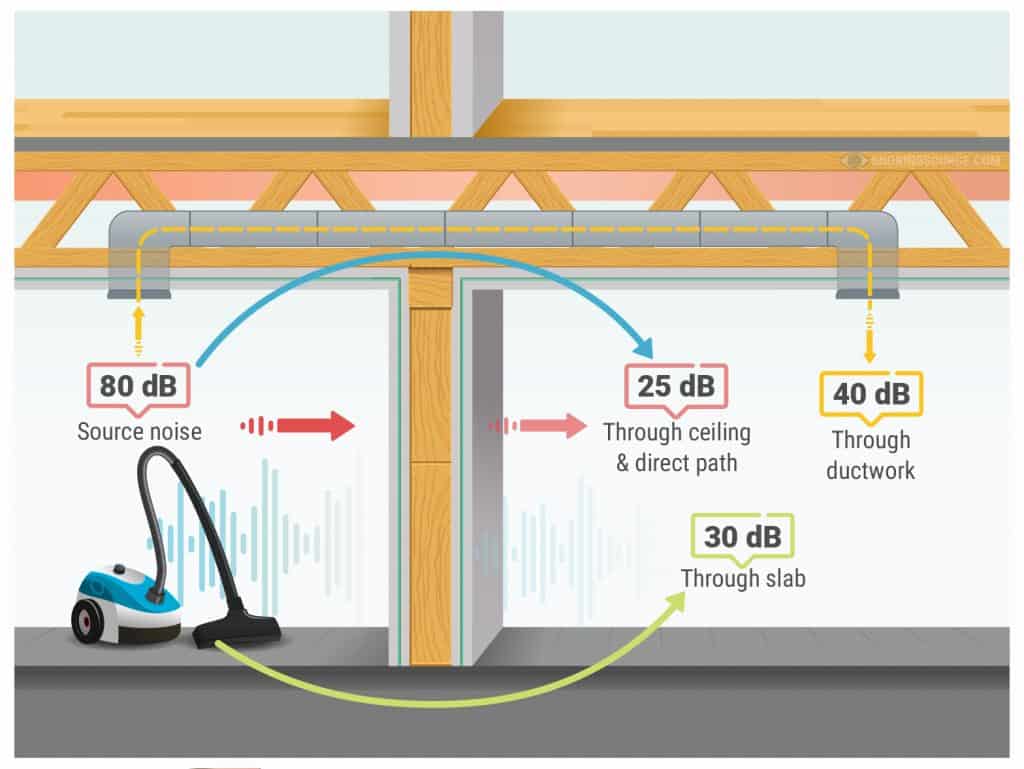
Airborne noise occurs when soundwaves travel through the air, collide with a solid object, and pass into the adjoining space.
When a person or object makes a noise, it generates energy (soundwaves). Those soundwaves are picked up by a medium, and in the case of airborne noise, that medium is, as the name suggests, air.
The soundwaves travel through the air until the crash into a solid structure – a door, a floor, a window, etc. – and the sound is heard in the space beyond the structure.
Some of the most common examples of airborne noise include people speaking, music, and the sounds from a TV.
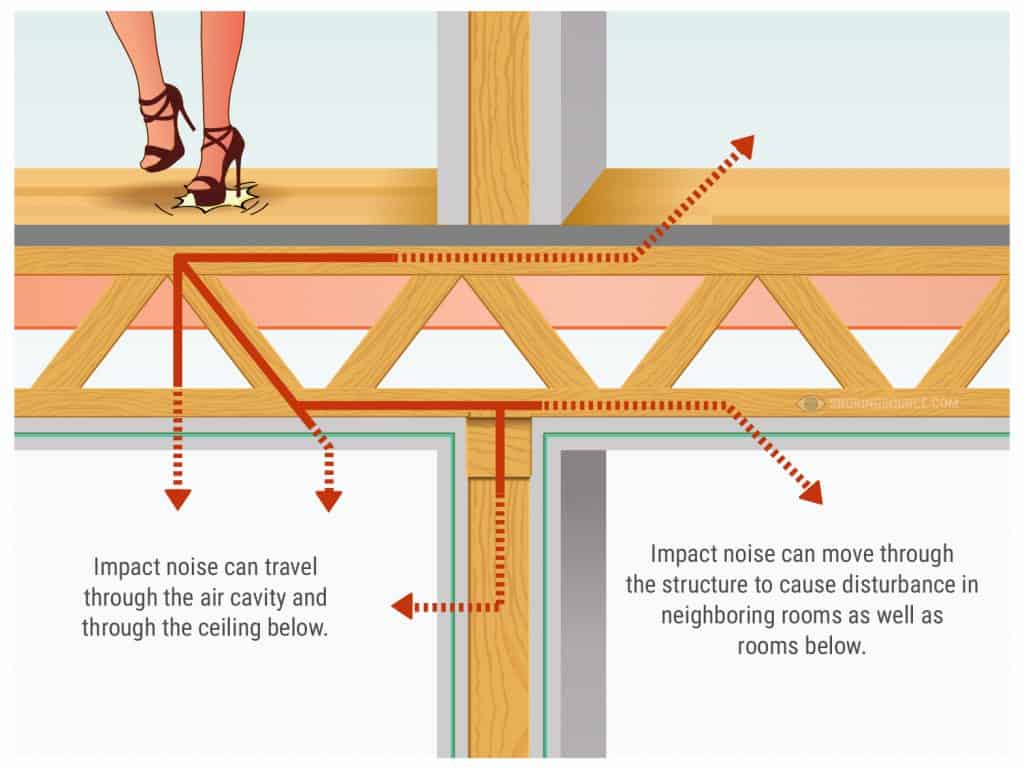
Structure-borne noise occurs when an object makes an impact with another object; hence why it’s also referred to as impact noise.
For instance, when a ball is bounced on the floor above you or someone knocks on the wall next to you and you hear it in your dorm room, the noise you are hearing is structure-borne.
When an object, such as a ball, impacts the floor it creates soundwaves. Instead of air, however, the soundwaves are picked up by and travel through the structure that the object collided with, such as a floor, a wall, a ceiling, or a door; it is for this reason that this type of noise is referred to as structure-borne noise.
In a dorm room, it’s likely that you’re going to experience both types of sound.
Now that you know the different types of noise and you’ve determined which type you want to eliminate, let’s take a look at some of the different soundproofing options that can be used for a dorm room.
It’s important to note, however, that no matter what type of technique you use, it’s highly unlikely that you’re going to completely soundproof the space; rather, you’ll minimize the level of unwanted noise.
Nevertheless, by using a combination of strategies, you should be able to significantly reduce noise pollution in your dorm room so that you can enjoy a quieter environment.
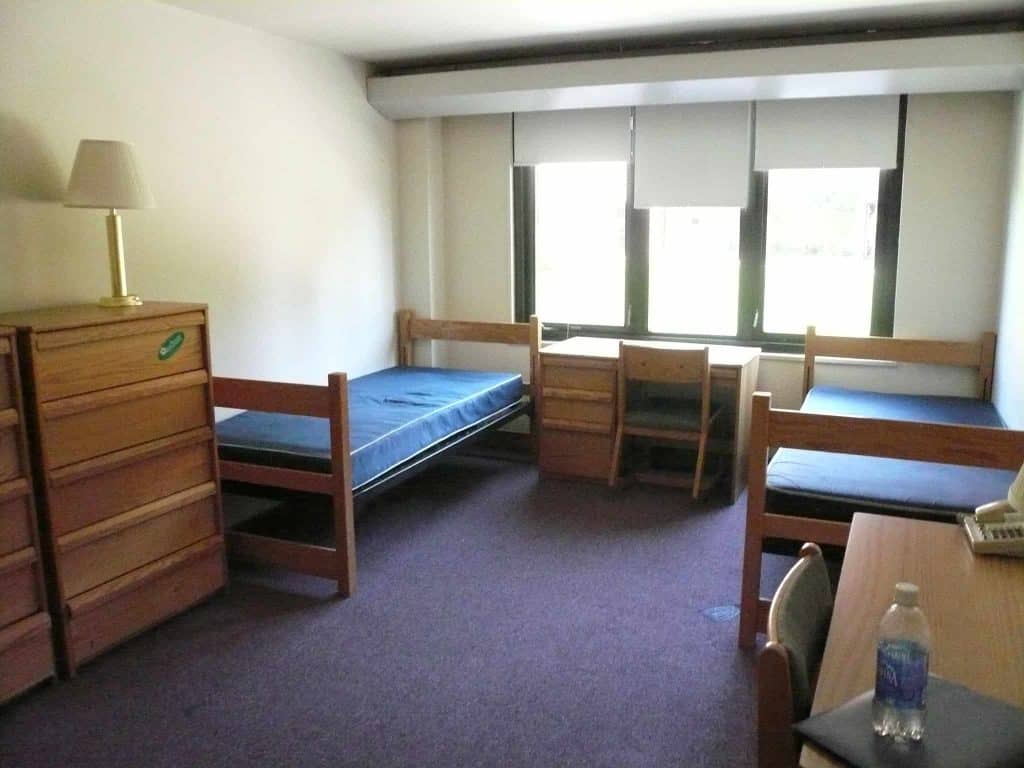
Believe it or not, you already have materials that you can use to reduce noise in your dorm room: furniture. Most dorm rooms are already furnished with the essential pieces, including beds, dressers, desks and chairs, closets, etc. Use them to your advantage.
Position the furniture on the walls where you hear noise coming through the most. For example, if you share a wall with a particularly noisy neighbor, place the dresser and desk on that wall.
However, avoid using the beds as soundproofing elements, as you’ll end up hearing the unwanted noise when you’re trying to sleep. Instead, put your beds on the wall furthest away from the source of undesirable noise.
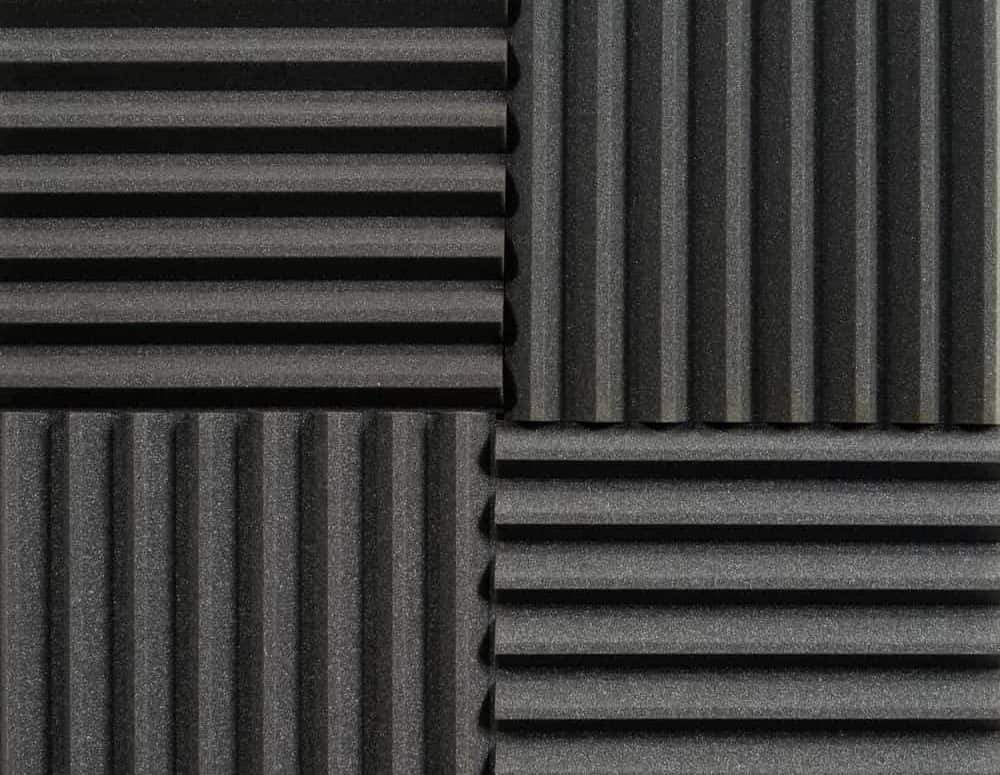
Hanging decorative elements helps to add aesthetic to your dorm to block out soundwaves. As a general rule of thumb, the thicker the elements, the more noise they’ll be able to block out.
Soundproof the floors and add some warmth with area rugs. The thicker the rugs, the better, as they’ll add more mass to the floor, and increasing mass is key in soundproofing; opt for thick shag rugs, which will not only absorb sound better, but they’ll also add warmth to the space and will feel great underfoot. For improved results, place a soundproof pad under the rug, too. Additionally, aim to cover as much of the floor as you can.

Secure acoustic foam tiles to the ceiling, again, using different colors to create a pattern. As an alternative you could hang sound deadening blankets from the ceiling, or thick tapestries.
If the people upstairs are really noisy, try installing Mass Loaded Vinyl (MLV) on the ceiling. It’s a thick, yet flexible vinyl material that is frequently used in soundproofing applications, and it’s pretty easy to install. Use some tacks or staples to secure it in place and you’ll be able to easily pull it down at the end of the school year.
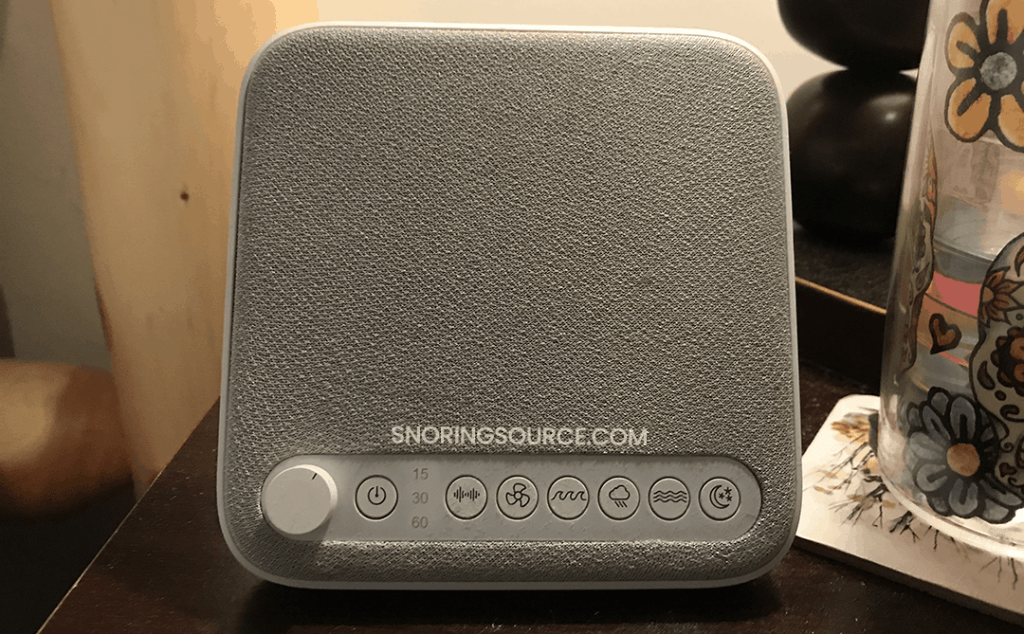
Adding noise to a space may seem counder-productive but a white noise machine is able to mask sounds that naturally occur in an environment. Standard white noise can mask all frequencies including impact and airborne noise. The noise (waves crashing, rain, etc.) can also can have therapeutic effects.
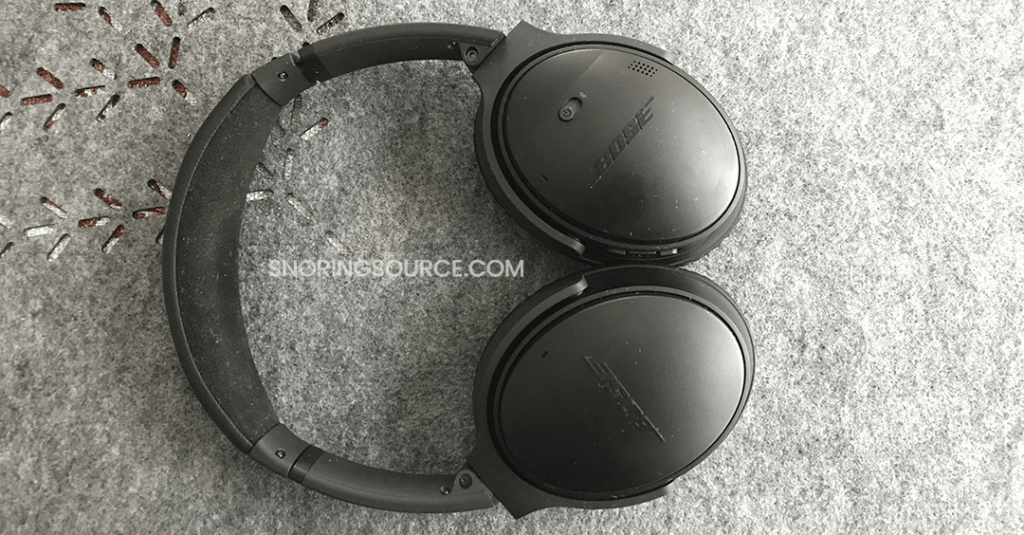
When all else fails, noise cancelling headphones are the way to go. Wear them whenever the noise level is really bothersome and you really need some peace and quiet; like when you’re studying for a final or writing a term paper.
Dorms are noisy spaces, but that noise doesn’t have to drive you crazy and take away from your college experience. Try a combination of these strategies and you’ll be able to get the best of both worlds: the fun and independence of living in a dorm and much-needed peace and quiet.

Snoringsource.com is a participant in the Amazon Services LLC Associates Program, an affiliate advertising program designed to provide a means for website owners to earn advertising fees by advertising and linking to amazon(.com, .co.uk, .ca etc) and any other website that may be affiliated with Amazon Service LLC Associates Program.